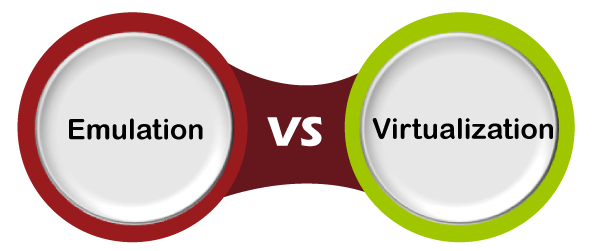Difference between Emulation and VirtualizationIn this article, we will discuss the difference between Emulation and Virtualization. The main difference between them is that emulation is the computer program's ability in an electronic device to emulate the behavior of another program or device. On the other hand, virtualization is the process of creating a virtual instance of computer hardware platforms. Before making the comparison, we will first know about Emulation and Virtualization. 
What is Emulation?In computing, the emulator is a hardware or software that enables one device (named Host) to function like other systems (named Guest). It is a perfect way to execute the hardware and software in any system. Emulation brings greater overhead, but it also has its benefits. It is relatively inexpensive, easily accessible and allows us to run programs that have become redundant in the available system. An emulator changes the CPU instructions required for the architecture and executes it on another architecture successfully. The emulation systems could be accessed remotely by anyone and are very simpler to use. Without affecting the underlying OS, it is an excellent capacity for embedded and OS development. Without considering the host's capabilities, emulation will usually manage the size of the design under test (DUT). What is Virtualization?It is developing a virtual instance of computing resources, including a computer, server, or other hardware components, or a software-based resource, such as an operating system. A single physical system is divided into many "virtual" servers by virtualization. Virtual machines (VMs) run on dedicated hardware without relying on each other. We split a single physical device into separate independent worlds, known as virtual machines, through virtualization. It allows us to create several computer simulations from the host hardware with dedicated resources. Server-based system architecture (SBSA) features are the same as the host system with a hypervisor or Virtual Machine Monitor (VMM). It is much more efficient and has various stages of implementation. Main differences between Emulation and VirtualizationThe following are the key differences between emulation and virtualization.
Head-to-Head comparison between the Emulation and VirtualizationThe following chart will discuss the head-to-head comparison between emulation and virtualization.
ConclusionWe can get confused between the two, as the term "Emulation" is often used to describe a virtual environment in server virtualization. We use complete hardware and software in the emulation that we want to emulate on top of the host device. In virtualization, we emulate the parts of the hardware according to the specifications with the help of guest OS to run correctly for the same architecture. The key similarity between virtualization and emulation is that they are both programs that, one way or another, imitate hardware. Both let's imitate and run a program in one setting that is intended for the other but with different techniques. Virtualization and Emulation approaches offer us options for deploying multiple isolated services without using a separate platform. All are used to fulfil a particular set of standards and are at a different level.
Next TopicDifference between
|
 For Videos Join Our Youtube Channel: Join Now
For Videos Join Our Youtube Channel: Join Now
Feedback
- Send your Feedback to [email protected]
Help Others, Please Share










